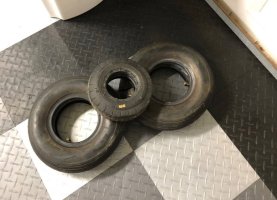samouced
Active Member
Did some discover learning replacing the dry rotted tires on my KB-3. I initially tried to cut the old tire off but discovered the steel bead. So,
I removed the bolts holding the wheel halves together. I repacked the bearings too and have a cotter pin kit on order. To easy.
Now, what do I torque the bolts too?



I removed the bolts holding the wheel halves together. I repacked the bearings too and have a cotter pin kit on order. To easy.
Now, what do I torque the bolts too?



Last edited:
